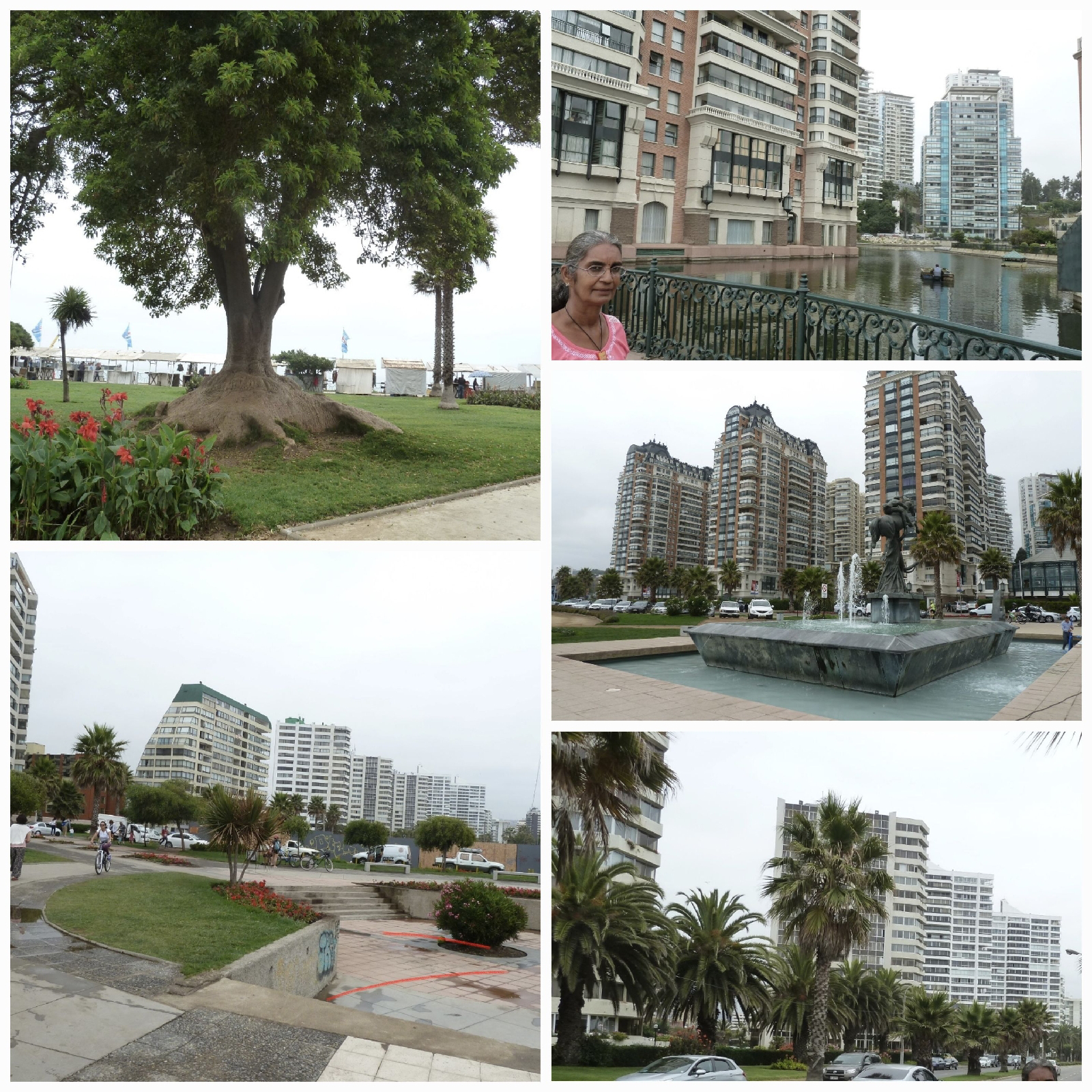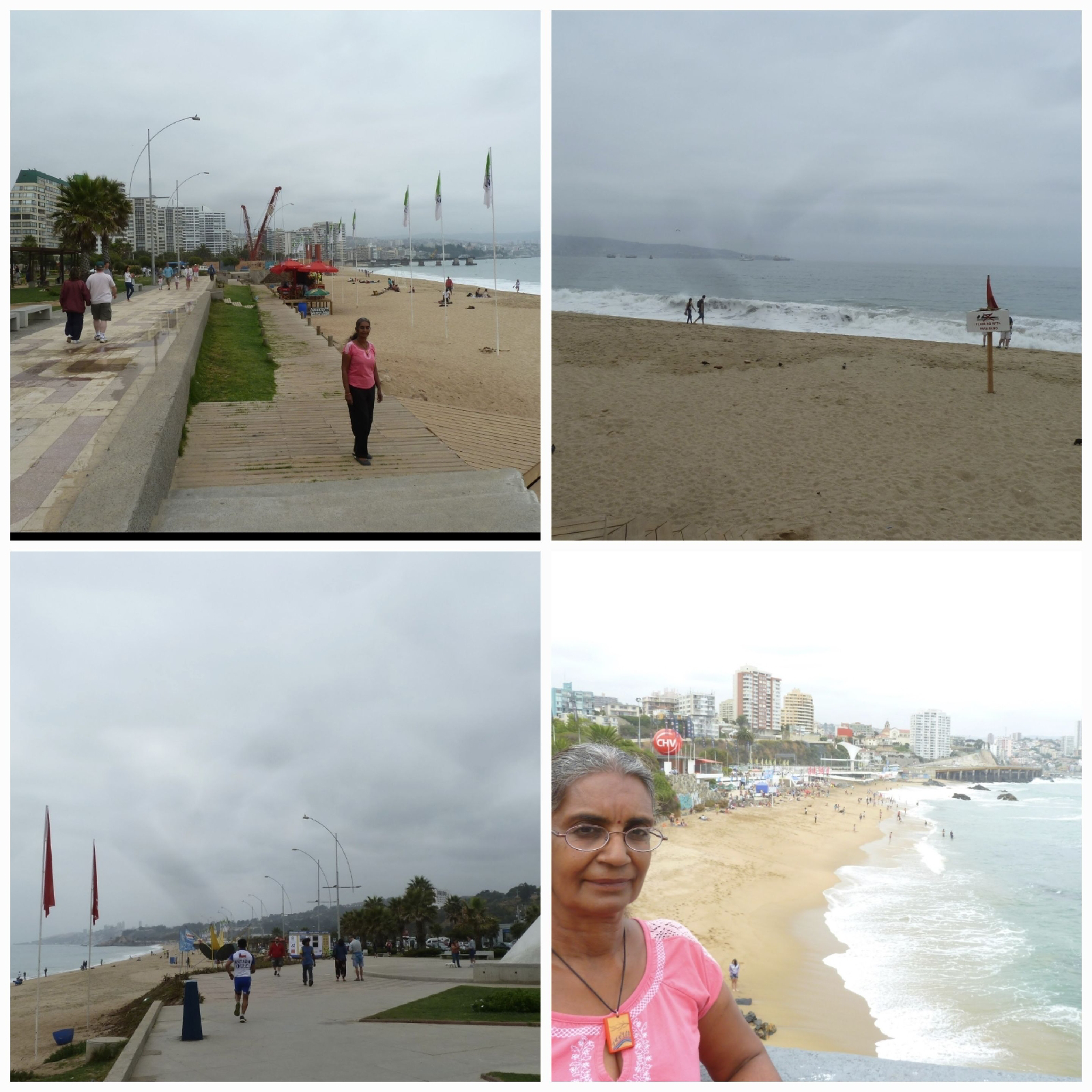Over the Andes to the Pacific coast
In Feb 2016, after our overland travels in Brazil and Argentina we fly from Buenos Aires to Santiago,Chile. Having flown over the Alps and the Rockies , it is quite exciting to fly over yet another mountain range, the Andes, second only to the Himalayas. After a few days in the city we take a bus to Valparaiso where we would stay for a couple of days before embarking a cruise. Chilean inter-city buses are very professionally run. You have an assigned seat. Your baggage is securely checked. Imagine an airline trip without the dehumanizing airport experience and long waiting lines. The bus ride of about two hours takes us over, between and around hills.The first time we were in Valparaiso, a few months before (Dec 2015)we had checked out the whereabouts of our AirBnB apartment. We know the way from the bus interchange and so we roll and pull our bags all the way along the not so ideal path along the railway line towards the city centre, the landmarks being very familiar.
Giving it a shot: in spite of warnings against muggings
On the second day, we decide to take a local bus for a sally into Vina del Mar. After some unproductive googling we decide to wing it. We would get on a bus very close to our accommodation. The bus frequency is every 15 mins. Just 340 pesos each should take us close to the beach for which Vina del Mar is famed. After some waiting the bus arrives. The driver indicates 400 pesos( except for our host no one has been able to communicate with us in English). We drop the coins in a receptacle and get a strip paper ticket. We drive off through the familiar streets with shops overflowing onto the street, and then up and down the various hills housing barrios, starkly showing the effects of frequent earthquakes.
It's more than 15 mins. We are still not at the beach. Passengers board and alight at the various stops. It's half an hour and still no sight of the sea side. We are climbing into the hills. We are driving into a terminus that looks isolated in spite of the numerous buses. The driver looks askance: where do you want to go? Wrong bus. He advises us to get off and then get into another of the buses just leaving the terminus. That should take us close to the beach (as I understood from a smattering of Spanish and sign language).
Sure enough, after a tense anticipation of about 10 mins we see a blue horizon and gleaming high rises that spoke of wealth. We surely must already be in Vina del Mar, and so we alight as soon as we see a bus stop.
Actually, we are not really interested in spending the day on the beach. Not in this hot steamy weather. Only to see why it is popular. We happen to have alighted in opulent surroundings filled with expensive looking high rises with manicured gardens and statuary, with nary a soul out and about in the surrounds. Perhaps it's too early in the day.
The avenues and boulevards are lined with palm trees and the grand looking distinctive native elephant foot tree.
Of course, all these buildings have sea views. We realise the beach is not always sandy. Parts of it are strewn with rocks rhythmically pounded by forceful waves. They are red flagged.
The beaches that intersperse the rocky protuberances are enticing with grainy white sand but the surf is something to contend with. Added to that the waters can be icy cold even in hot weather since the Peruvian current caused by cold streams from Antartica chases along the coast line. What a contradiction -- enchanting and torturous!
As we walk along the esplanade towards Valparaiso we begin to see the stirrings of a city: playgrounds, bungee jumping, water sports, food and drink stalls, etc. The city takes on a more varied skyline. Imposing edifices appear. Museums, monuments and colonial architecture greet the eye. The 3rd biggest city in Chile doesn't disappoint. Historical artifacts from a golden age are aptly showcased in the old mansions of wealthy families. We are surprised to see a castle, Castillo Brunet, once a mansion.
We stroll past the unmistakeable art deco style casino. The gardens around it are so well taken care of that it gave rise to the moniker Garden City. A little furthur is Castillo Wulff, built in Neo-Tudor style, with a turret along the shore with waves lashing it. We have passed the most lively part of the city with its thriving restaurants and bars. At this point we are at the palm tree lined estuary of the Marga Marga River crossing the little bridges. The best place to watch the sun slipping into the horizon with all its twilight glory setting everything aglow.
We still haven't sighted the flower clock which I really want to see for it reminds me of the one we had in Singapore while I was growing up. But we have walked so far and Valparaiso is within sight. Are we going to miss the clock? Just as I was coming to terms with reality I see the Sheraton looming in front of me. Sheraton would know. Surely someone there will speak English. I walk up to the security hoping to go into the lobby for information. But I'm not a guest of the hotel and so I'm turned away, not in a huff but with a finger pointing towards the flower clock! And there it stood a few meters away on a sloping lawn made up of 16 thousand plants. Since 1962, when it was built by the Swiss for the World Cup, it has been damaged by vandalism and a fallen tree. The mechanism had to be replaced. Now the works are based on a GPS system. That the city continues to maintain it at all costs reflects the value the citizens place on the iconic display.
We had already trudged nearly 8 kilometers from Las Salinas to the flower clock. Valparaiso is within sight. It's a pleasant cool evening. Why not walk to our home? And so we hug the coast for nearly 10 kilometers stopping by or swinging down the Marinas, piers and the not so popular beaches, on an elevated highway and then to the fish market .
Vina del mar lived up to its reputation. We had yet another adventure and a 18
kilometer walk. A very satisfying day indeed.
But where are the "vineyards by the water"?

















No comments:
Post a Comment
Comments are welcome